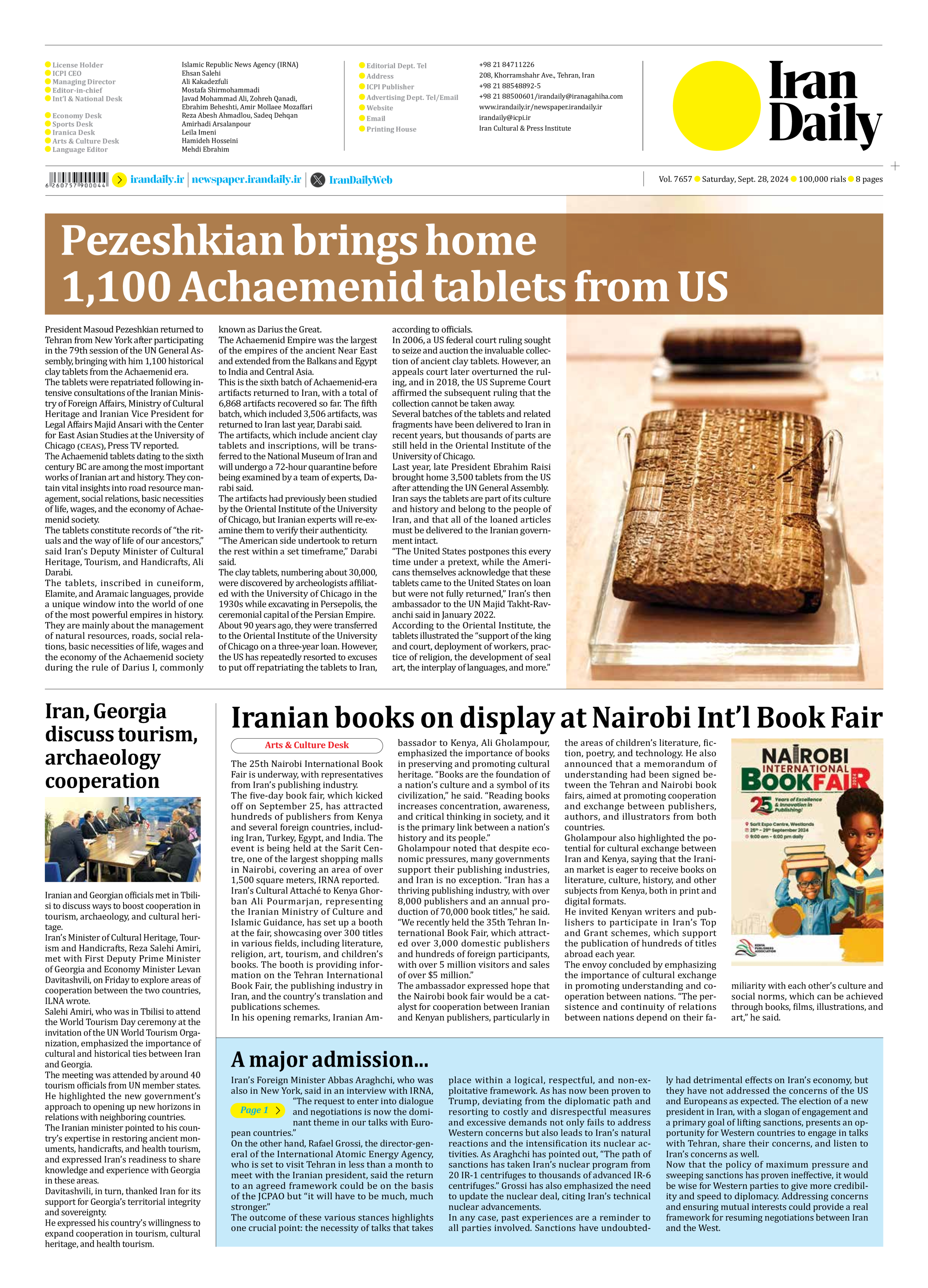
Copy in clipboard...
Pezeshkian brings home 1,100 Achaemenid tablets from US
The tablets were repatriated following intensive consultations of the Iranian Ministry of Foreign Affairs, Ministry of Cultural Heritage and Iranian Vice President for Legal Affairs Majid Ansari with the Center for East Asian Studies at the University of Chicago (CEAS), Press TV reported.
The Achaemenid tablets dating to the sixth century BC are among the most important works of Iranian art and history. They contain vital insights into road resource management, social relations, basic necessities of life, wages, and the economy of Achaemenid society.
The tablets constitute records of “the rituals and the way of life of our ancestors,” said Iran’s Deputy Minister of Cultural Heritage, Tourism, and Handicrafts, Ali Darabi.
The tablets, inscribed in cuneiform, Elamite, and Aramaic languages, provide a unique window into the world of one of the most powerful empires in history. They are mainly about the management of natural resources, roads, social relations, basic necessities of life, wages and the economy of the Achaemenid society during the rule of Darius I, commonly known as Darius the Great.
The Achaemenid Empire was the largest of the empires of the ancient Near East and extended from the Balkans and Egypt to India and Central Asia.
This is the sixth batch of Achaemenid-era artifacts returned to Iran, with a total of 6,868 artifacts recovered so far. The fifth batch, which included 3,506 artifacts, was returned to Iran last year, Darabi said.
The artifacts, which include ancient clay tablets and inscriptions, will be transferred to the National Museum of Iran and will undergo a 72-hour quarantine before being examined by a team of experts, Darabi said.
The artifacts had previously been studied by the Oriental Institute of the University of Chicago, but Iranian experts will re-examine them to verify their authenticity.
“The American side undertook to return the rest within a set timeframe,” Darabi said.
The clay tablets, numbering about 30,000, were discovered by archeologists affiliated with the University of Chicago in the 1930s while excavating in Persepolis, the ceremonial capital of the Persian Empire.
About 90 years ago, they were transferred to the Oriental Institute of the University of Chicago on a three-year loan. However, the US has repeatedly resorted to excuses to put off repatriating the tablets to Iran, according to officials.
In 2006, a US federal court ruling sought to seize and auction the invaluable collection of ancient clay tablets. However, an appeals court later overturned the ruling, and in 2018, the US Supreme Court affirmed the subsequent ruling that the collection cannot be taken away.
Several batches of the tablets and related fragments have been delivered to Iran in recent years, but thousands of parts are still held in the Oriental Institute of the University of Chicago.
Last year, late President Ebrahim Raisi brought home 3,500 tablets from the US after attending the UN General Assembly.
Iran says the tablets are part of its culture and history and belong to the people of Iran, and that all of the loaned articles must be delivered to the Iranian government intact.
“The United States postpones this every time under a pretext, while the Americans themselves acknowledge that these tablets came to the United States on loan but were not fully returned,” Iran’s then ambassador to the UN Majid Takht-Ravanchi said in January 2022.
According to the Oriental Institute, the tablets illustrated the “support of the king and court, deployment of workers, practice of religion, the development of seal art, the interplay of languages, and more.”







